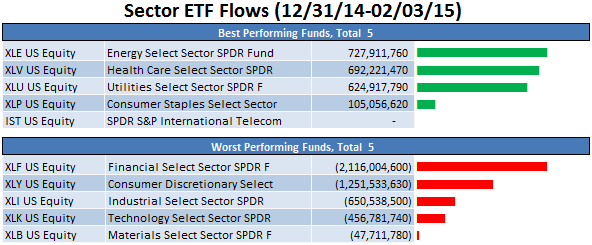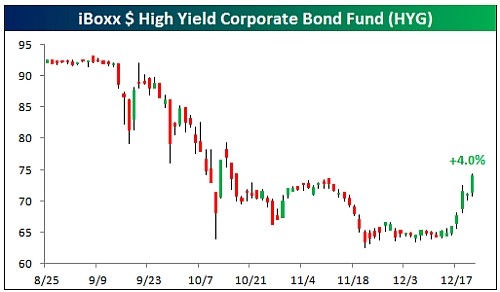Credit Markets Are Showing Signs of Life
Post on: 31 Март, 2015 No Comment

Add to Portfolio
Companies with good credit are borrowing more money in the bond markets. Confidence in the banking industry seems to be returning, despite the daily ups and downs of financial shares. Even junk bonds. the high-risk corporate debt instruments, are luring brave souls again.
The revival is tentative and, like the gains in the stock market, which pulled back on Monday, it may well prove fleeting. But analysts say the improvements suggest that investors are starting to get some of their old nerve back, mainly because of sweeping federal efforts to get credit flowing again.
All of which is welcome news for consumers, companies and the broader economy.
The market for securities made from bundles of car loans and student loans a vital source of credit has started to stabilize. Prices of these investments have risen in the last month, suggesting government-run programs to buy or guarantee this type of debt are gaining traction.
Home buyers are seeing some benefits of the credit thaw. Interest rates on a fixed 30-year mortgage fell to 4.61 percent for the week ending March 27, the Mortgage Bankers Association reported, their lowest levels on record. Last year, before the government and central bankers intervened to lower borrowing costs, mortgage rates were more than 6 percent.
The tone Im hearing across the board is notably improved, said Jane Caron, chief economic strategist at Dwight Asset Management, which specializes in debt securities. Portfolio managers are feeling better about their sectors. The story is the most positive its been in months. Which, admittedly, is not saying too much.
The market for loans and corporate bonds went into lockdown mode last autumn after the collapse of Lehman Brothers. Lending dried up, bond values plunged and skittish banks started charging hefty premiums to part with their money for even a short while.
But huge rescue measures and guarantees by the Treasury and Federal Reserve have helped to shore up the credit markets, and some tentative signs of life in the wider economy are now encouraging lenders and borrowers to rethink their apocalyptic outlooks.
The fundamentals are still poor, but a lot of bonds are priced for an extraordinarily high default rate, Ms. Caron said. Weve priced in a pretty disastrous outcome, so anything short of disaster bodes well for these bonds.
On Monday, the Federal Reserve and central banks in Britain, Japan and Europe continued to try to chip away at the credit problem. They announced an agreement that could provide about $287 billion in liquidity to the Federal Reserve, in the form of currency swaps.
The Fed could draw on these lines to provide more liquidity to financial institutions, this time using euros, British pounds, Swiss francs and yen. Last fall, the Fed and other central banks set up swap agreements to provide dollars to foreign banks, and some analysts said the pendulum was now swinging the other way.
This really underlines the globalization of the monetary system, said Ashraf Laidi, chief foreign exchange strategist at CMC Markets. You could say that the global central banks are being used as an indirect means of shoring up liquidity in a nations commercial banks.
Credit markets and stock markets have largely been riding the same updraft in the last four weeks. A swell of optimism, ignited by the governments new bailout plans and some positive chatter from banks about their profitability, has lifted shares from their lowest levels in 12 years and rescued credit markets, which had been stumbling back toward the bad old days of last year.
Businesses with better credit ratings issued $200 billion of debt in the first quarter, according to Thomson Reuters, compared with $188 billion a year ago.
Even as credit rating agencies predict high rates of default for 2009 and junk-rated companies like General Growth Properties, the shopping mall owner, struggle to avoid bankruptcy, investors are pushing more money into high-yield debt. Junk bonds just ended their best quarter in five years, and a report by AMG Data Services said that $923 million flowed into junk-bond mutual funds last week, the most since 2005.
Were definitely getting money coming back, said Jeremy Hughes, a high-yield portfolio manager at Aviva Investors. The risk appetite has definitely returned, at least for the time being.

Yields on junk bonds are about 16.5 percentage points more than Treasuries, a fat premium for risk by historical standards. But the gap has narrowed from nearly 22 percentage points in mid-December, according to Merrill Lynch indexes, and it has fallen over the last four weeks as stocks raced higher.
As the Dow Jones industrial average closed above 8,000 on Friday for the first time since February, other crucial measures of lending also wrapped up a winning week.
The London interbank offered rate, known as Libor, which tracks borrowing costs among banks, fell to 1.16 percent, down from 1.27 percent a month ago and sharply lower than the 4.8 percent interest banks charged each other at the peak of the credit crisis.
The gap between borrowing costs for banks as reflected by the Libor and for the federal government, and, as such, a measure of confidence in banks, was at 0.97 points on Monday, close to its lowest and most optimistic levels since February and about where it was last summer. Last October, as Washington groped to address the financial crisis, the gap, known as the Ted spread, spiked to 4.6 points.
Of course, credit markets are still fragile. Ratings agencies are slashing the credit scores of companies, including General Electric, whose previously triple-A credit rating was cut two notches by Moodys, to Aa2. Bondholders at General Motors are bracing for the possibility of losing billions of dollars in unsecured debt if the automaker files for bankruptcy protection.
And if unemployment continues to race higher or the stimulus fails to take root and the economy enters a deeper period of decline, many of the tentative gains in credit could come undone, analysts say.
Even if the markets continue to improve tick by tick, some analysts wonder whether they are truly getting better, or merely being kept alive by a huge apparatus of government support systems propping up everything from short-term commercial paper to money markets to home mortgages.
The question to ask is not whether credit markets have improved, said Jeff Rosenberg, head of credit strategy research at Bank of America/Merrill Lynch. The question is, what is the source of the improvement? Can credit markets function without significant government intervention? Indisputably, the answer is no.














